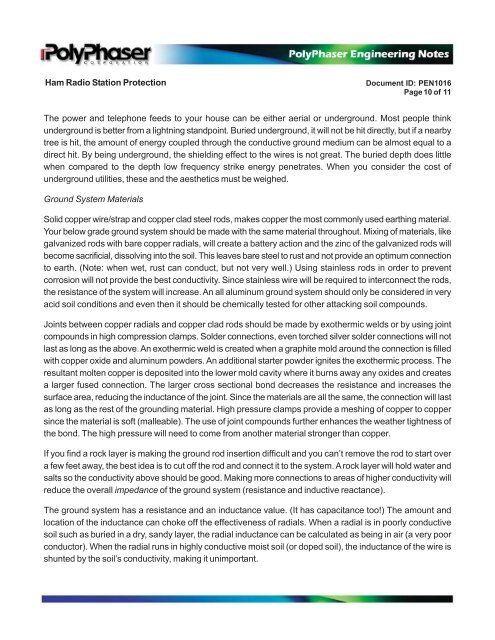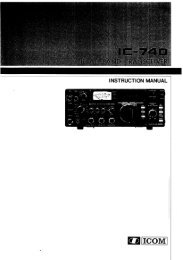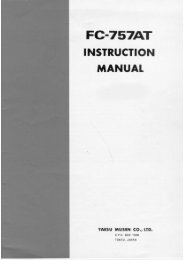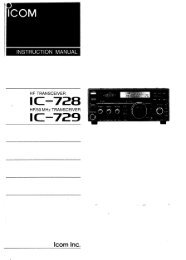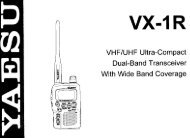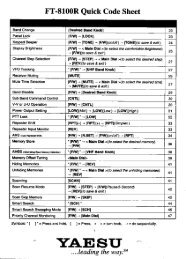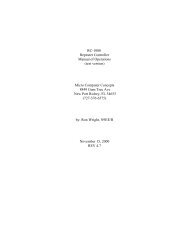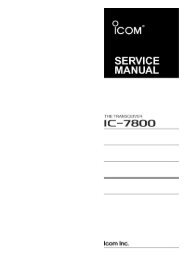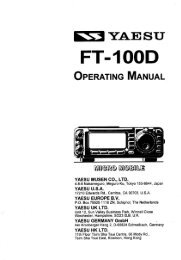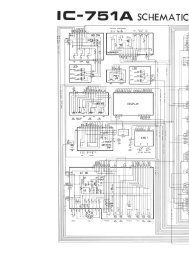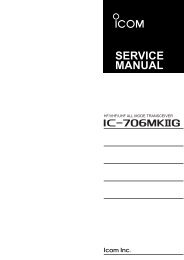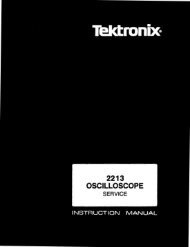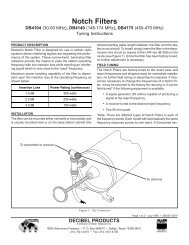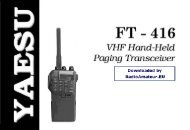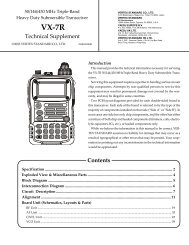Lightning Protection for Ham Radio Stations
Lightning Protection for Ham Radio Stations
Lightning Protection for Ham Radio Stations
You also want an ePaper? Increase the reach of your titles
YUMPU automatically turns print PDFs into web optimized ePapers that Google loves.
<strong>Ham</strong> <strong>Radio</strong> Station <strong>Protection</strong>Document ID: PEN1016Page 10 3 of 11The power and telephone feeds to your house can be either aerial or underground. Most people thinkunderground is better from a lightning standpoint. Buried underground, it will not be hit directly, but if a nearbytree is hit, the amount of energy coupled through the conductive ground medium can be almost equal to adirect hit. By being underground, the shielding effect to the wires is not great. The buried depth does littlewhen compared to the depth low frequency strike energy penetrates. When you consider the cost ofunderground utilities, these and the aesthetics must be weighed.Ground System MaterialsSolid copper wire/strap and copper clad steel rods, makes copper the most commonly used earthing material.Your below grade ground system should be made with the same material throughout. Mixing of materials, likegalvanized rods with bare copper radials, will create a battery action and the zinc of the galvanized rods willbecome sacrificial, dissolving into the soil. This leaves bare steel to rust and not provide an optimum connectionto earth. (Note: when wet, rust can conduct, but not very well.) Using stainless rods in order to preventcorrosion will not provide the best conductivity. Since stainless wire will be required to interconnect the rods,the resistance of the system will increase. An all aluminum ground system should only be considered in veryacid soil conditions and even then it should be chemically tested <strong>for</strong> other attacking soil compounds.Joints between copper radials and copper clad rods should be made by exothermic welds or by using jointcompounds in high compression clamps. Solder connections, even torched silver solder connections will notlast as long as the above. An exothermic weld is created when a graphite mold around the connection is filledwith copper oxide and aluminum powders. An additional starter powder ignites the exothermic process. Theresultant molten copper is deposited into the lower mold cavity where it burns away any oxides and createsa larger fused connection. The larger cross sectional bond decreases the resistance and increases thesurface area, reducing the inductance of the joint. Since the materials are all the same, the connection will lastas long as the rest of the grounding material. High pressure clamps provide a meshing of copper to coppersince the material is soft (malleable). The use of joint compounds further enhances the weather tightness ofthe bond. The high pressure will need to come from another material stronger than copper.If you find a rock layer is making the ground rod insertion difficult and you can’t remove the rod to start overa few feet away, the best idea is to cut off the rod and connect it to the system. A rock layer will hold water andsalts so the conductivity above should be good. Making more connections to areas of higher conductivity willreduce the overall impedance of the ground system (resistance and inductive reactance).The ground system has a resistance and an inductance value. (It has capacitance too!) The amount andlocation of the inductance can choke off the effectiveness of radials. When a radial is in poorly conductivesoil such as buried in a dry, sandy layer, the radial inductance can be calculated as being in air (a very poorconductor). When the radial runs in highly conductive moist soil (or doped soil), the inductance of the wire isshunted by the soil’s conductivity, making it unimportant.


